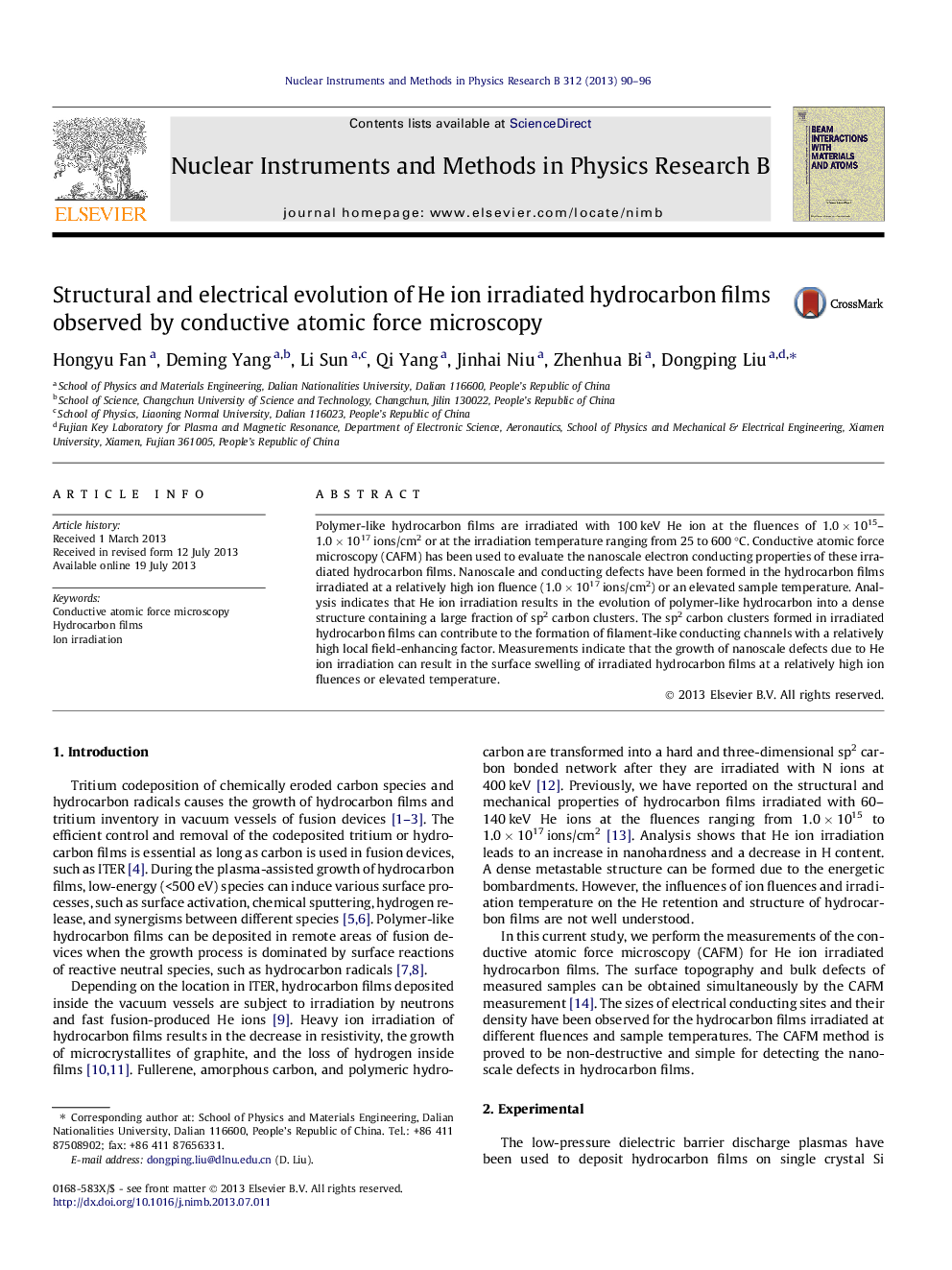| Article ID | Journal | Published Year | Pages | File Type |
|---|---|---|---|---|
| 1681214 | Nuclear Instruments and Methods in Physics Research Section B: Beam Interactions with Materials and Atoms | 2013 | 7 Pages |
Abstract
Polymer-like hydrocarbon films are irradiated with 100 keV He ion at the fluences of 1.0 Ã 1015-1.0 Ã 1017 ions/cm2 or at the irradiation temperature ranging from 25 to 600 °C. Conductive atomic force microscopy (CAFM) has been used to evaluate the nanoscale electron conducting properties of these irradiated hydrocarbon films. Nanoscale and conducting defects have been formed in the hydrocarbon films irradiated at a relatively high ion fluence (1.0 Ã 1017 ions/cm2) or an elevated sample temperature. Analysis indicates that He ion irradiation results in the evolution of polymer-like hydrocarbon into a dense structure containing a large fraction of sp2 carbon clusters. The sp2 carbon clusters formed in irradiated hydrocarbon films can contribute to the formation of filament-like conducting channels with a relatively high local field-enhancing factor. Measurements indicate that the growth of nanoscale defects due to He ion irradiation can result in the surface swelling of irradiated hydrocarbon films at a relatively high ion fluences or elevated temperature.
Related Topics
Physical Sciences and Engineering
Materials Science
Surfaces, Coatings and Films
Authors
Hongyu Fan, Deming Yang, Li Sun, Qi Yang, Jinhai Niu, Zhenhua Bi, Dongping Liu,
